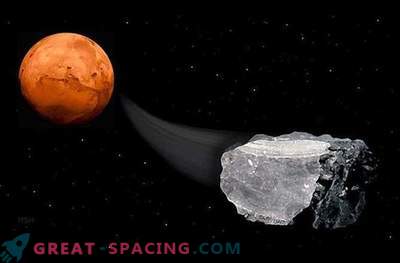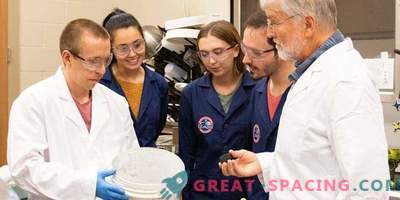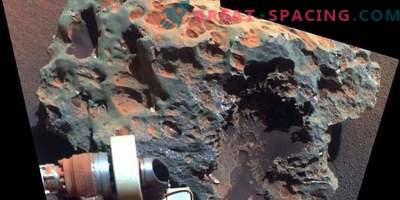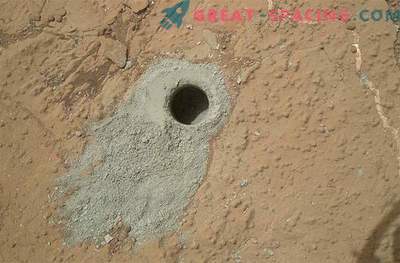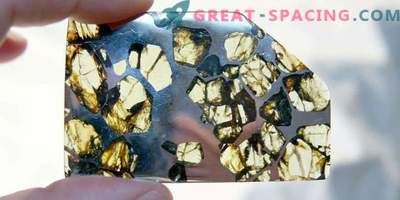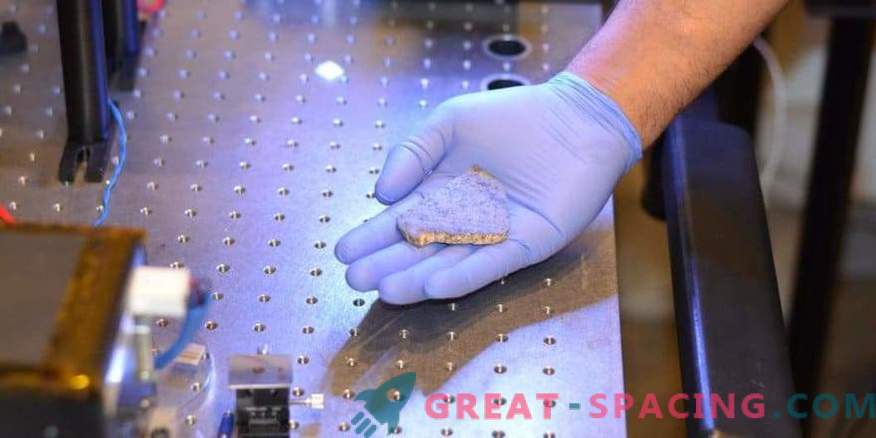
A piece of Mars will be home soon. Part of the meteorite SaU008 will be sent along with the Mars 2020 mission, developed by the Jet Propulsion Laboratory (Pasadena, California). This shard will be a test material for a high-tech laser.
The goal of Mars 2020 is to collect samples from the surface of the Red Planet, which can later be returned to Earth. One of the tools of the rover will be a laser designed to illuminate small rocky objects.
This level of accuracy requires a calibration target to set the laser settings. NASA's early work also included calibration targets. Depending on the tool, the target material may be stone, metal, glass, or a combination of all the elements. However, work on a specific device prompted scientists to the idea: why not use a real Martian shard.
These meteorites are not as unique as those that the mission will collect. But they are still interesting scientifically and ideally suited for practical purposes. It is important to understand that even small shifts caused by temperature changes or a rover sunk in the sand may require adjustments to the target.
SHERLOC will be the first instrument to use fluorescence spectroscopy, which is most often used in forensic examination. When UV light hits a specific carbon-based chemical, the same characteristic glow that is seen under black light is released.

Close-up of a fragment of a Martian meteorite. One of two slices is used to test a laser device for Mars 2020 while it is still on Earth. The second will be placed on the rover Researchers can use luminescence to identify chemicals that form in the presence of life. SHERLOC will remove the studied stones and display chemicals.
No strange meteorites
Martian meteorites are considered rare, therefore valuable to collectors. Only 200 finds were confirmed by the Meteorite community. To select the right one for SHERLOC, scientists turned to Johnson Space Center (Houston) and the Natural History Museum in London for help. The state of the meteorite must be strong enough so that it does not crumble during the period of launch and landing.
To check the sensitivity of the tool, the stone must have certain chemical properties. Experts used several samples to test their strength. If the stone peels off, it will ruin the whole process. In the end, the choice was stopped at SaU008, found in Oman in 1999.
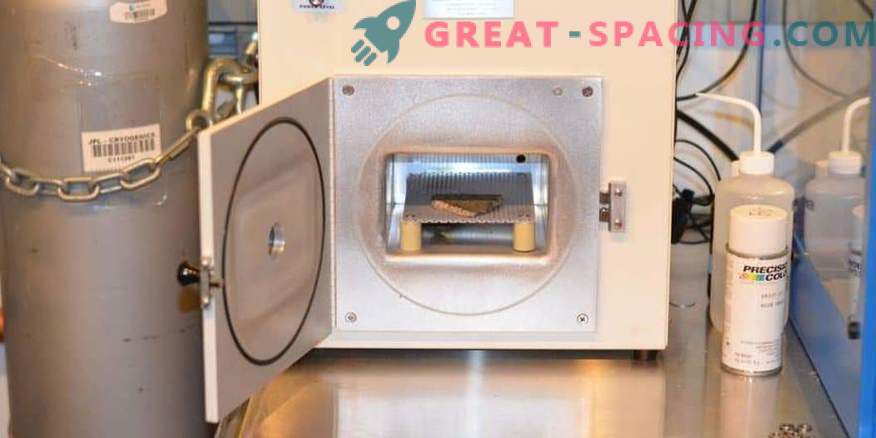
A meteorite slice is placed inside an oxygen plasma cleaner that removes organic matter from the surface. One of two slices is used to test a laser device for Mars 2020 while it is still on Earth. The second will be placed on the rover
SaU008 will be the first meteorite, whose part will try to return to the parent planet. The command from the SuperCam camera on the rover will add a Martian meteorite to its own calibration targets.
Preparing people for Mars
The SHERLOC calibration target is set to include some interesting patterns for human flight. Among them will be materials for the manufacture of cloth space suit, gloves and a helmet. They are used to test the effects of space weather and Martian radiation.
The SHERLOC device is a valuable opportunity to prepare for human space flight, as well as to conduct scientific research on the surface of the Red Planet. Part of Mars is returning home
A piece of Mars will be home soon. Part of the meteorite SaU008 will be sent along with the Mars 2020 mission, developed by the Jet Propulsion Laboratory (Pasadena, California). This shard will be a test material for a high-tech laser.
The goal of Mars 2020 is to collect samples from the surface of the Red Planet, which can later be returned to Earth. One of the tools of the rover will be a laser designed to illuminate small rocky objects.
This level of accuracy requires a calibration target to set the laser settings. NASA's early work also included calibration targets. Depending on the tool, the target material may be stone, metal, glass, or a combination of all the elements. However, work on a specific device prompted scientists to the idea: why not use a real Martian shard.
These meteorites are not as unique as those that the mission will collect. But they are still interesting scientifically and ideally suited for practical purposes. It is important to understand that even small shifts caused by temperature changes or a rover sunk in the sand may require adjustments to the target.
SHERLOC will be the first instrument to use fluorescence spectroscopy, which is most often used in forensic examination. When UV light hits a specific carbon-based chemical, the same characteristic glow that is seen under black light is released.
Researchers can use luminescence to identify chemicals that form in the presence of life. SHERLOC will remove the studied stones and display chemicals.
No strange meteorites
Martian meteorites are considered rare, therefore valuable to collectors. Only 200 finds were confirmed by the Meteorite community. To select the right one for SHERLOC, scientists turned to Johnson Space Center (Houston) and the Natural History Museum in London for help. The state of the meteorite must be strong enough so that it does not crumble during the period of launch and landing.
To check the sensitivity of the tool, the stone must have certain chemical properties. Experts used several samples to test their strength. If the stone peels off, it will ruin the whole process. In the end, the choice was stopped at SaU008, found in Oman in 1999.
SaU008 will be the first meteorite, whose part will try to return to the parent planet. The command from the SuperCam camera on the rover will add a Martian meteorite to its own calibration targets.
Preparing people for Mars
The SHERLOC calibration target is set to include some interesting patterns for human flight. Among them will be materials for the manufacture of cloth space suit, gloves and a helmet. They are used to test the effects of space weather and Martian radiation.
The SHERLOC device is a valuable opportunity to prepare for human space flight, as well as to conduct scientific research on the surface of the Red Planet.

